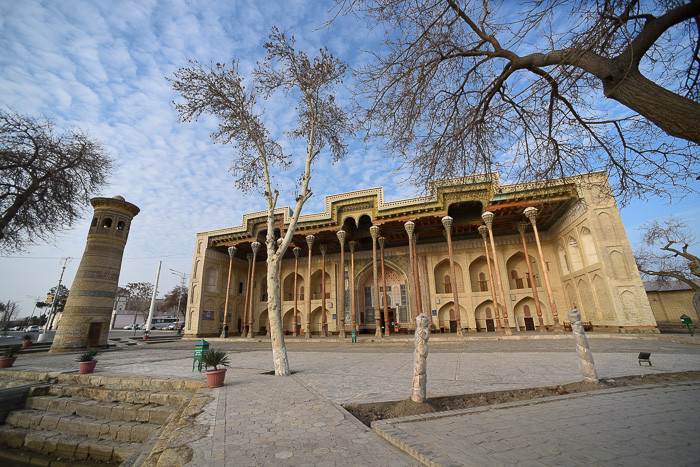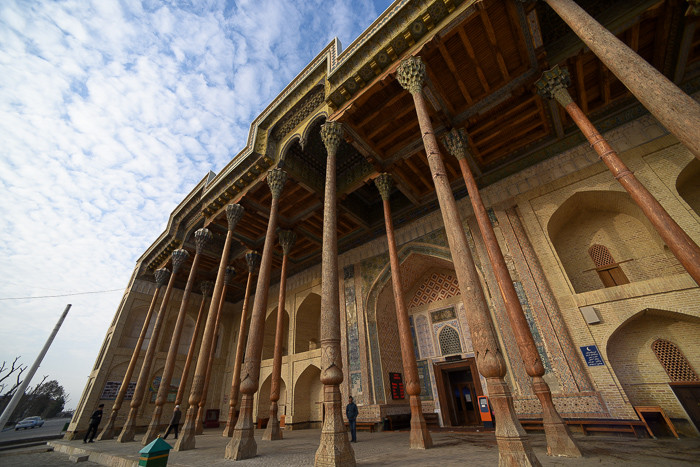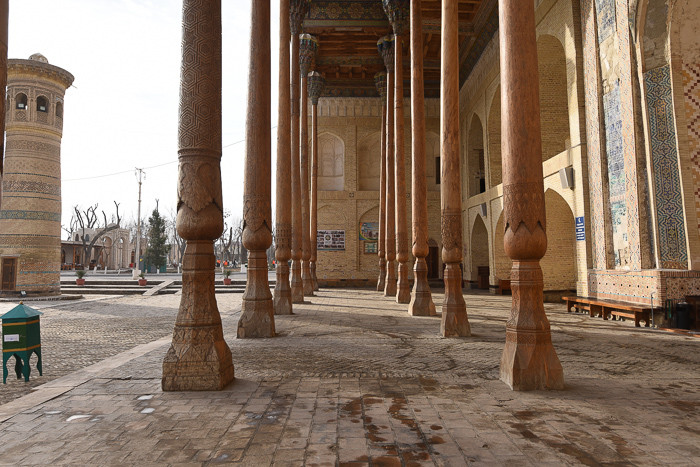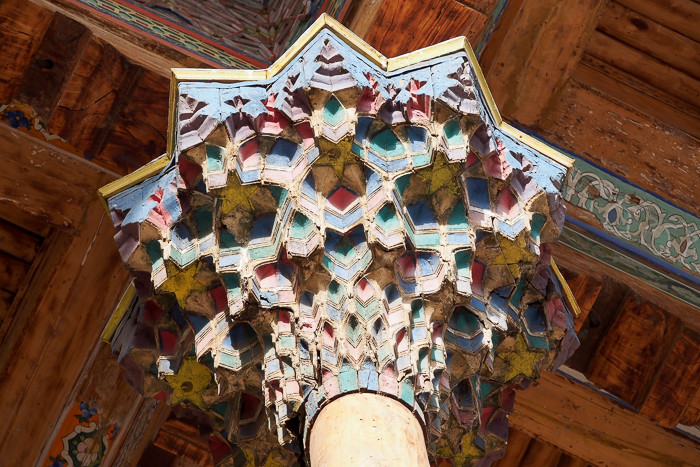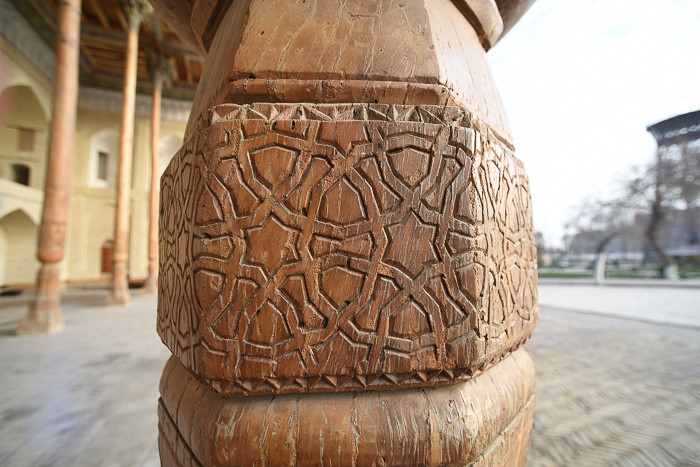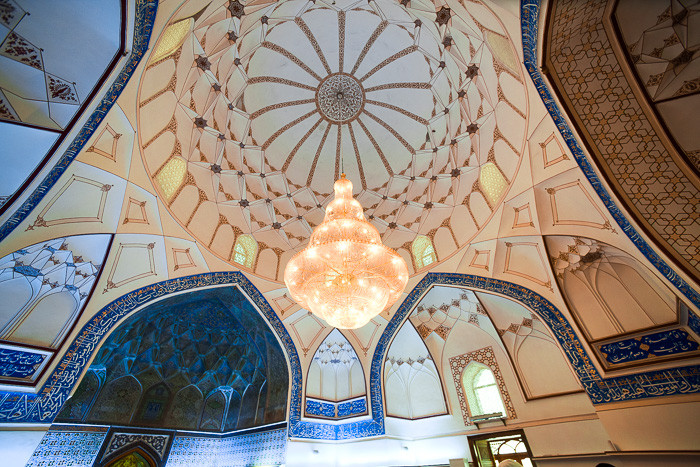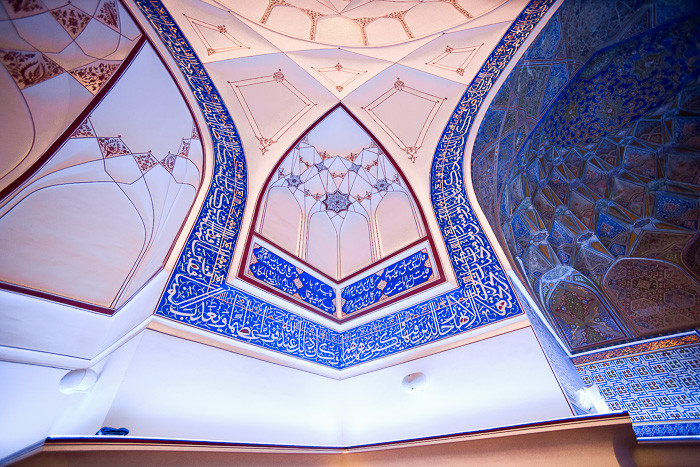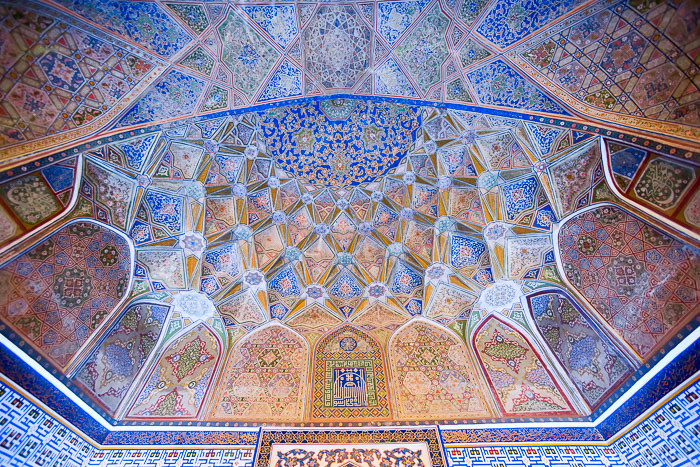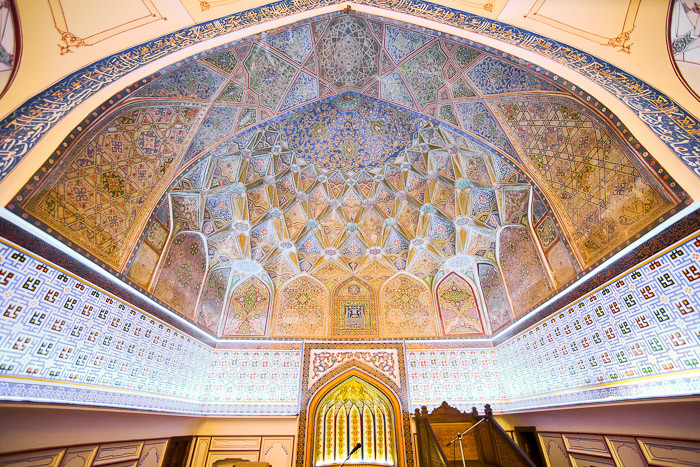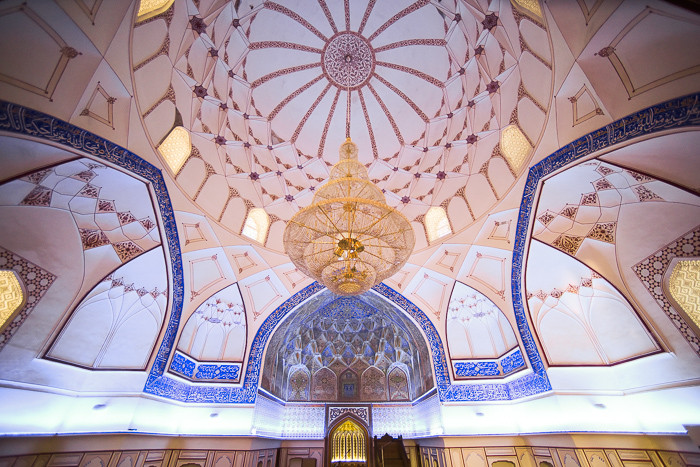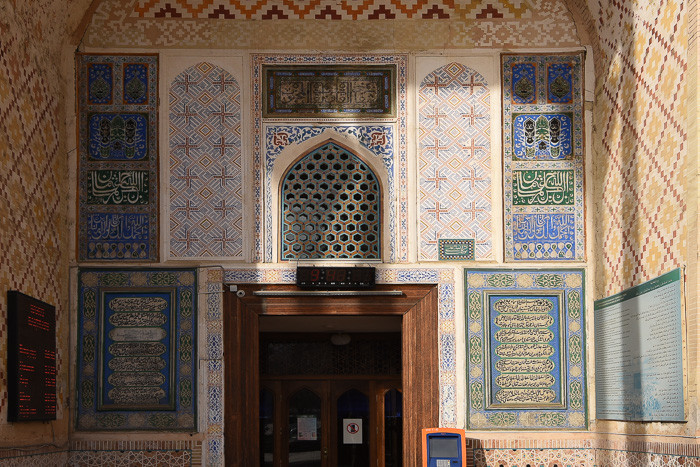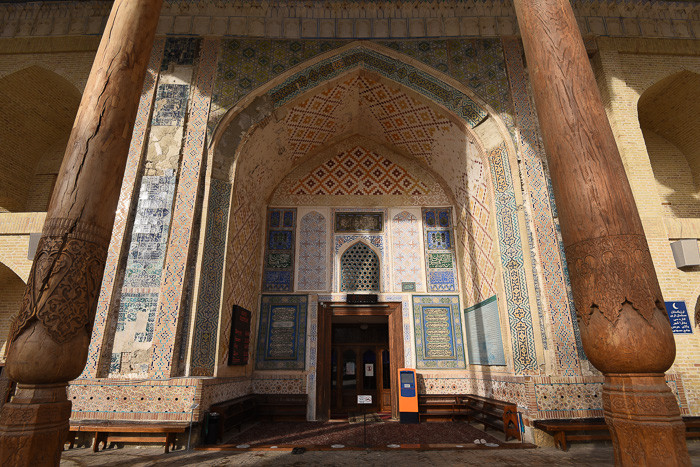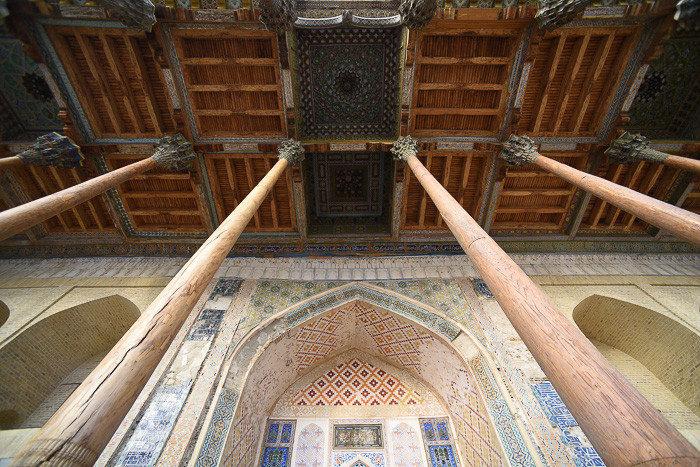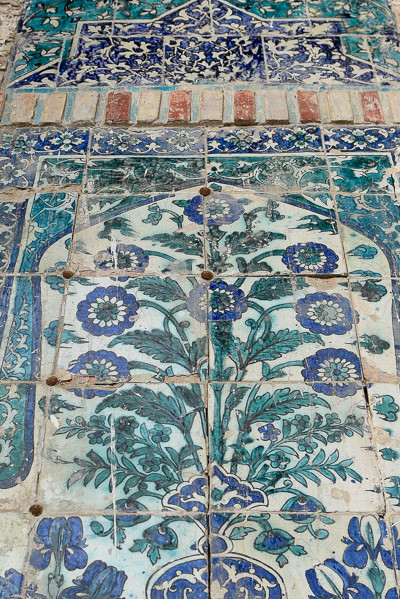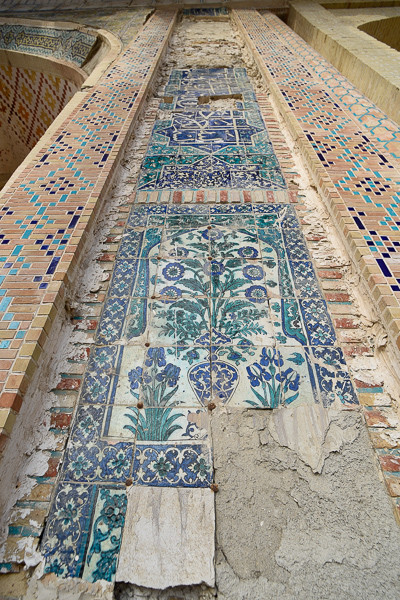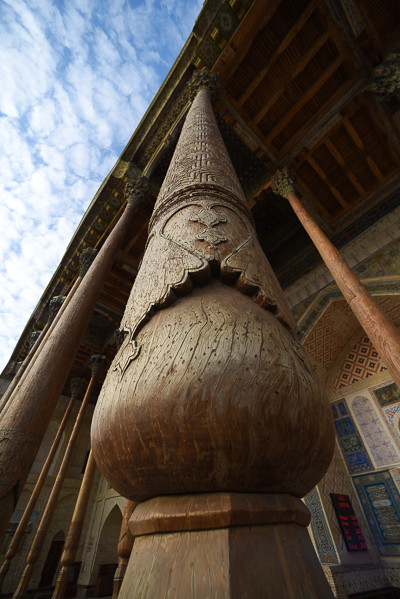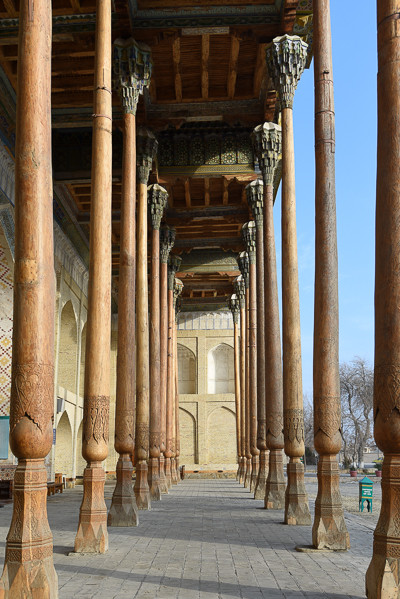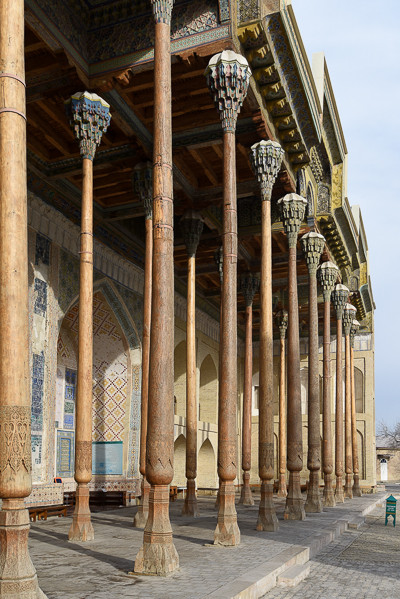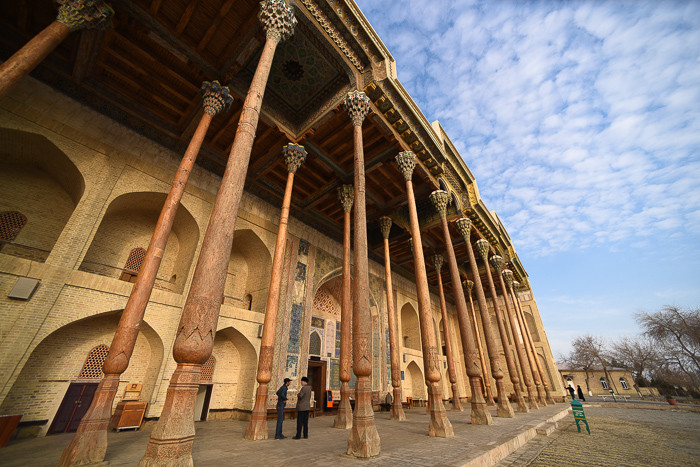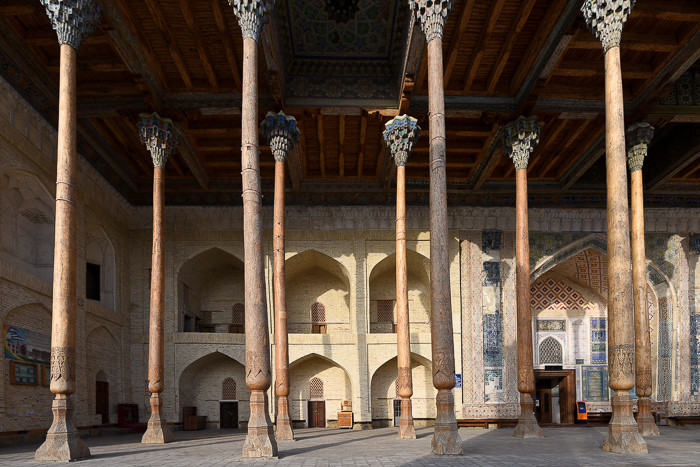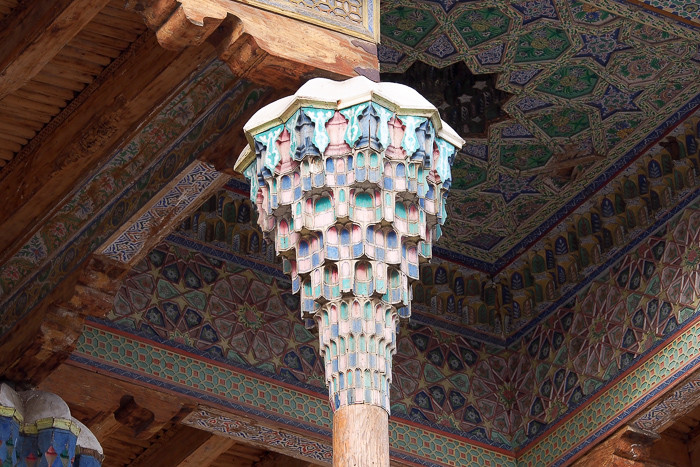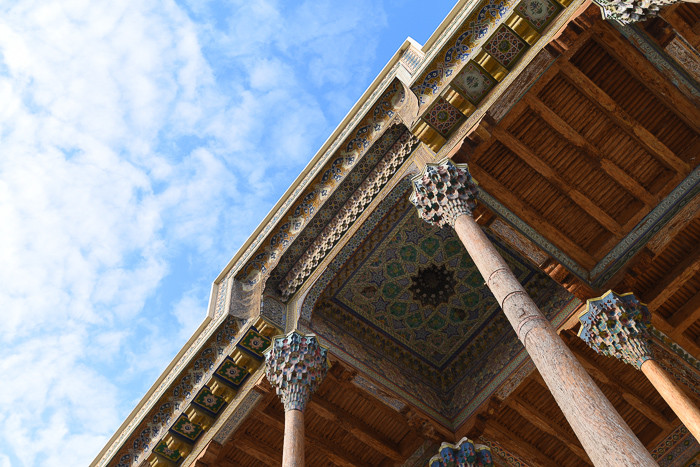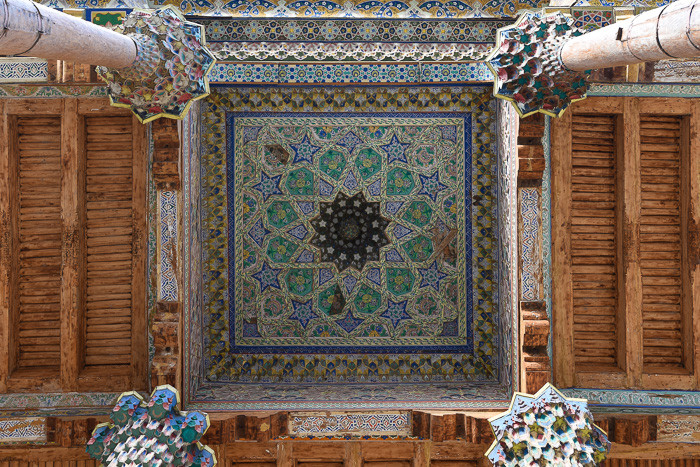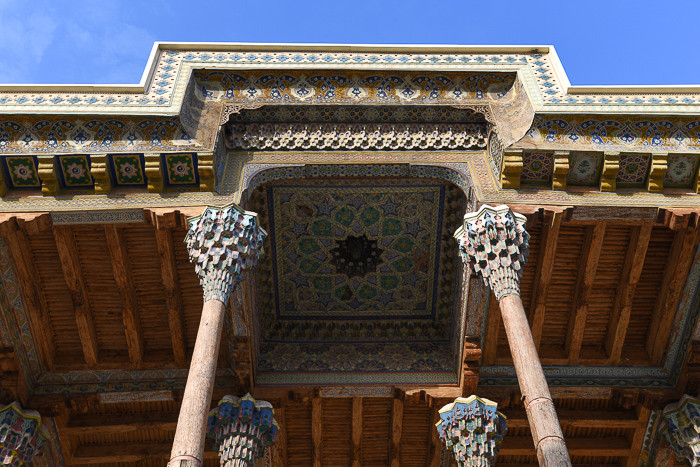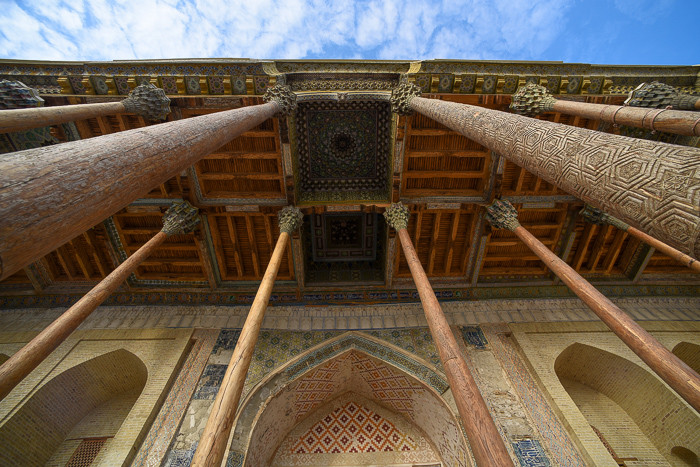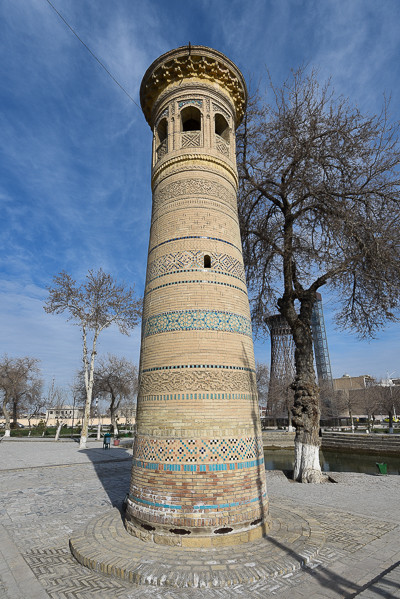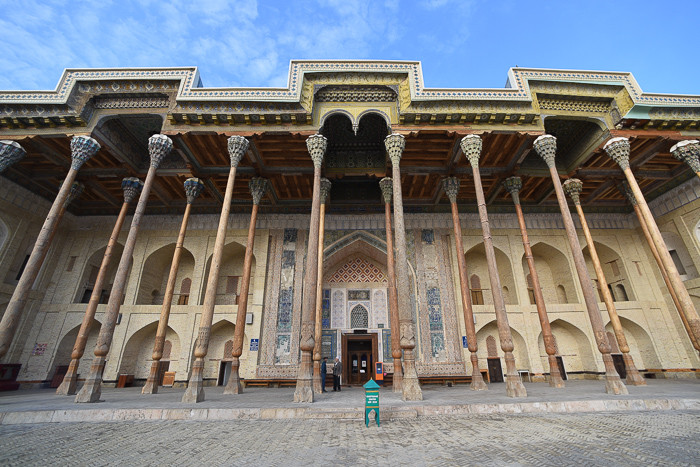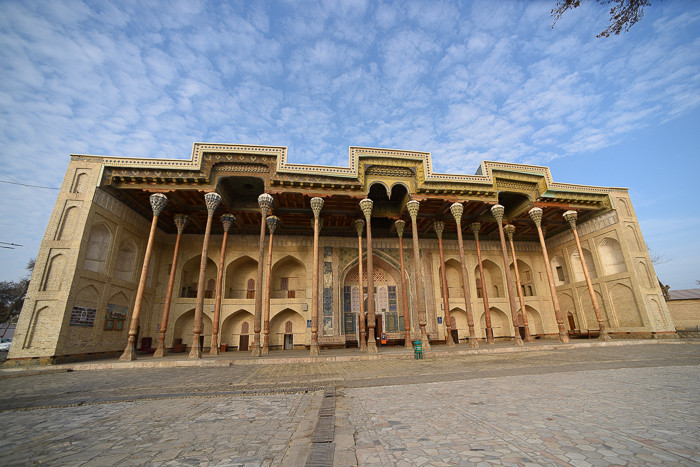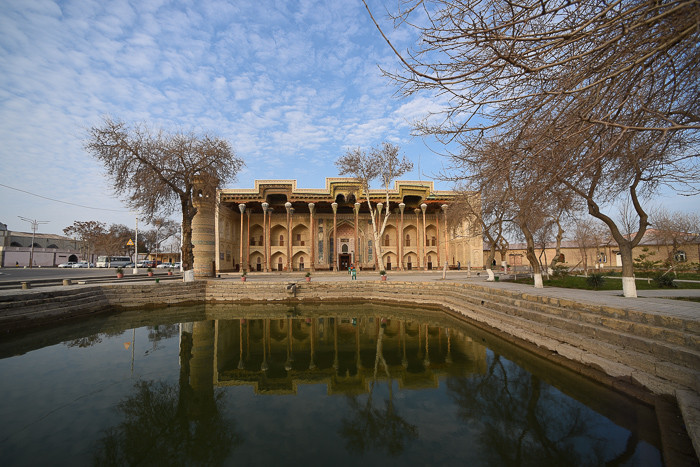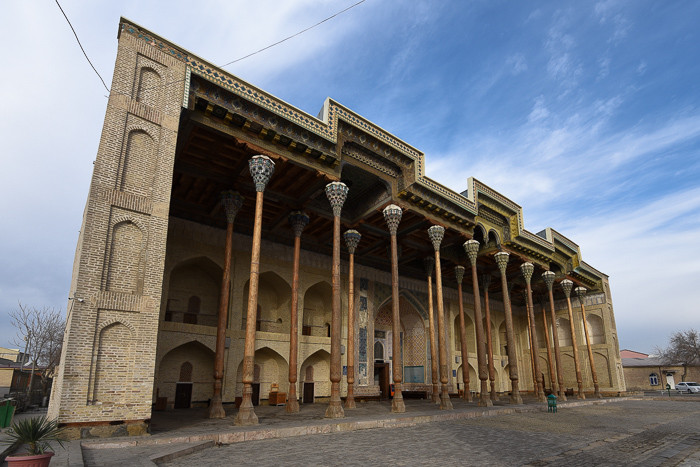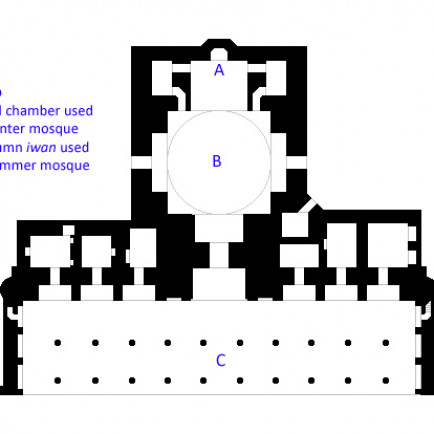Bolo Hauz Mosque
History
The Bolo Hauz is a Friday mosque, large enough to host the special noon jumu'ah prayers for a large percentage of the population. In practice, the mosque served as the personal house of worship for the ruling Khan, who often traveled to and from his Ark palace with great pomp and ceremony, cushioned by a continuous spread of carpets laid specially for the occasion. It was here that his name was read aloud in Friday prayers, underscoring the Khan's absolute authority over the city and all its affairs.
Urban and Architectural
The mosque is a curious hybrid design reflecting Bukhara's harsh climate—stifling heat in summer months, bone-chilling cold in the winter, with periods of pleasant weather in between. As in Khiva, architects adapted to these extremes by designing buildings with north or east facing iwans which were open on one more sides, providing ample ventilation and shade in summertime. In winter months, a building's occupants retreated indoors where fires might be lit. At the Bolo Hauz, the core of the building is its winter mosque with heavy brick walls, capped by a spacious dome. The interior is decorated with muqarnas-style vaulting, particularly in the antechamber adjacent to the mihrab. In the summer, worshippers would have used the expansive iwan on the east side of the building comprising a 20-pillared hall measuring 42 x 10 meters, bounded on three sides by mosque's brick walls. As Chuvin and DeGeorge note, this design recalls the "forty pillars" (Chehel Sotoun) common in Persian architecture. Each of the pillars is fashioned from two tree trunks connected end-to-end (to extend the length) and is made of walnut, elm, and poplar wood.It is, however, important to note that construction of the 20-pillar iwan hall was a relatively late development, occurring at the beginning of the 20th century. Prior to that period the mosque comprised either only the central brick core or an earlier wooden iwan which no longer survives. In any case, it is fortunate that the iwan escaped destruction in the 1920 siege of Bukhara by the Red Army which resulted in the loss of most of the adjacent Ark Fortress which was ravaged by fire
Description
Located on the western edge of the former registan, or plaza, the Bolo Hauz stands opposite the Ark Fortress in a kosh arrangement with the registan between them. Its name means "above the pool", referring to the octagonal hauz, or artificial pond, located directly in front of it (mosques in Bukhara traditionally incorporated a hauz, whenever possible; see also the Hoja Zayniddin mosque). Begun in 1712, early in the reign of Abu'l-Faiz Khan (r. 1711-47), it is one of the last and finest of Bukhara's major buildings prior to the modern era.
Details
Location
Bukhara, Uzbekistan, The approximate location of the site is 39.777729' N, 64.407356' E (WGS 84 map datum).
Year of Build
(built 1712 onwards; wooden iwan added 1917)
Drawings
Map
History
The Bolo Hauz is a Friday mosque, large enough to host the special noon jumu'ah prayers for a large percentage of the population. In practice, the mosque served as the personal house of worship for the ruling Khan, who often traveled to and from his Ark palace with great pomp and ceremony, cushioned by a continuous spread of carpets laid specially for the occasion. It was here that his name was read aloud in Friday prayers, underscoring the Khan's absolute authority over the city and all its affairs.
Urban and Architectural
The mosque is a curious hybrid design reflecting Bukhara's harsh climate—stifling heat in summer months, bone-chilling cold in the winter, with periods of pleasant weather in between. As in Khiva, architects adapted to these extremes by designing buildings with north or east facing iwans which were open on one more sides, providing ample ventilation and shade in summertime. In winter months, a building's occupants retreated indoors where fires might be lit. At the Bolo Hauz, the core of the building is its winter mosque with heavy brick walls, capped by a spacious dome. The interior is decorated with muqarnas-style vaulting, particularly in the antechamber adjacent to the mihrab. In the summer, worshippers would have used the expansive iwan on the east side of the building comprising a 20-pillared hall measuring 42 x 10 meters, bounded on three sides by mosque's brick walls. As Chuvin and DeGeorge note, this design recalls the "forty pillars" (Chehel Sotoun) common in Persian architecture. Each of the pillars is fashioned from two tree trunks connected end-to-end (to extend the length) and is made of walnut, elm, and poplar wood.It is, however, important to note that construction of the 20-pillar iwan hall was a relatively late development, occurring at the beginning of the 20th century. Prior to that period the mosque comprised either only the central brick core or an earlier wooden iwan which no longer survives. In any case, it is fortunate that the iwan escaped destruction in the 1920 siege of Bukhara by the Red Army which resulted in the loss of most of the adjacent Ark Fortress which was ravaged by fire
Description
Located on the western edge of the former registan, or plaza, the Bolo Hauz stands opposite the Ark Fortress in a kosh arrangement with the registan between them. Its name means "above the pool", referring to the octagonal hauz, or artificial pond, located directly in front of it (mosques in Bukhara traditionally incorporated a hauz, whenever possible; see also the Hoja Zayniddin mosque). Begun in 1712, early in the reign of Abu'l-Faiz Khan (r. 1711-47), it is one of the last and finest of Bukhara's major buildings prior to the modern era.


